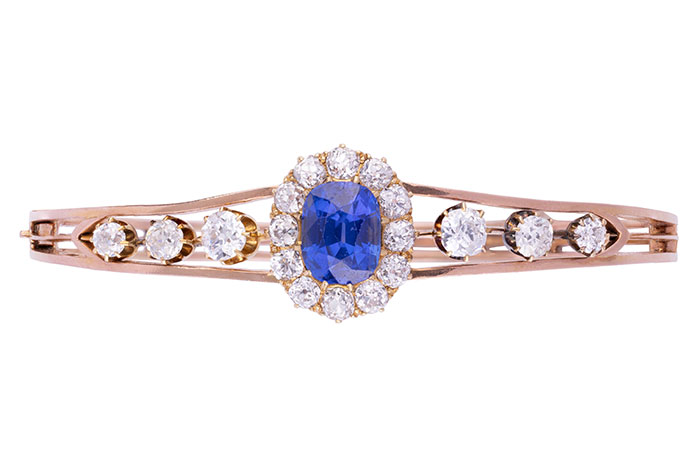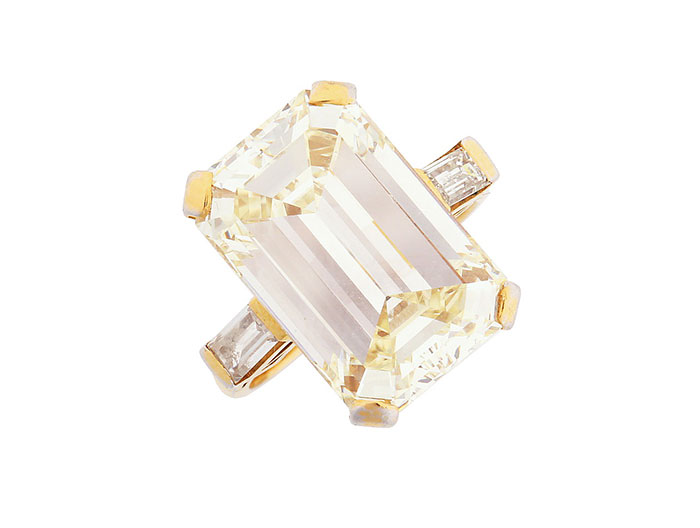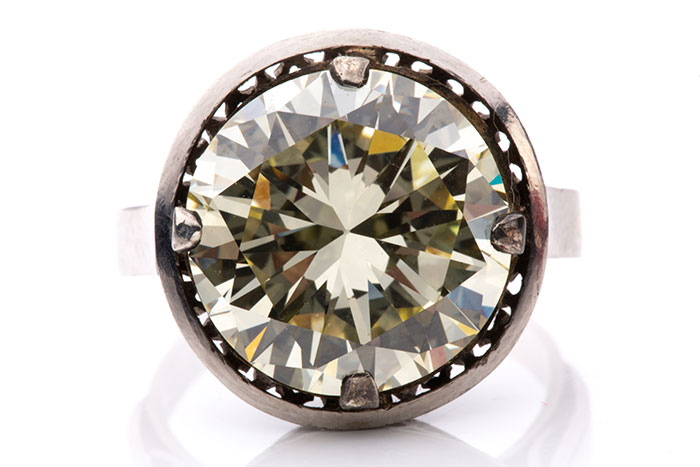How to Tell if a Diamond is Real
Distinguishing between genuine and simulant diamonds is essential to avoid costly errors
15/07/2024
While professional assessment by a qualified Diamond grader (DGA) is always advisable, the following guidelines can help you determine authenticity.
The Fog Test: Hold the stone close to your mouth and exhale onto its surface. Genuine diamonds disperse fog instantly due to their thermal conductivity. If the fog lingers, the stone is likely a simulant. Further clarity can be gained by performing the test simultaneously with a known genuine diamond.
A Victorian Kashmir Sapphire and diamond cluster hinged bangle
Refraction: Diamonds have a high refractive index, bending light significantly. For unmounted brilliant cut gems, place the stone upside down on a piece of newspaper; if you can read the letters through the stone, it is probably not a diamond. Similarly, place the stone over a black dot on white paper; if the dot is visible from above, the stone is likely a simulant. Authentic diamonds typically do not allow light to pass through clearly in these tests.
Materials and Inclusions: Using a magnifying glass or jeweller’s loupe (10x magnification), inspect the stone for imperfections. Bubbles indicate a simulant, and the absence of natural inclusions may also signal a synthetic or simulant gemstone. Ensure the setting is made of precious metals like silver, gold, or platinum. Jewellery marked 'CZ' signifies cubic zirconia, and older pieces may lack markings.
Fire & Life: Under a daylight lamp, observe the stone’s brilliance. Genuine diamonds have a distinctive sparkle. Shining a penlight through the stone should reveal white light rather than rainbow colours, which suggests treated diamonds, CZ's or moissanite.
A rare 11.03ct diamond three-stone Kutchinsky ring
Floating Test: Drop a loose diamond into a glass of water. A real diamond will sink due to its density, whereas some simulants will float.
UV Light: Some genuine diamonds glow blue under ultraviolet light. However, many authentic diamonds do not fluoresce, making this test inconclusive on its own.
Avoid heat and scratch tests, as they can damage the stone.
The most reliable verification method is a professional assessment and at Dawsons, our fine jewellery department consists of gemmologists who possess the necessary tools and expertise to authenticate diamonds. Tools such as electric diamond testers, microscopes, scales, and long/short wave ultraviolet machines, combined with experience, allow these experts to verify a stone’s authenticity.
Modern challenges include laboratory-grown diamonds, which share the same chemical composition and appearance as natural stones. Dawsons Jewellery Department tests all diamonds in-house for, natural mined diamonds and synthetic man-made diamonds.
When buying engagement rings, investing in fine jewellery, or ensuring value for money, understanding a diamond is crucial. Diamonds are valued with reference to, the international diamond market using the carat weight, cut, clarity and colour of the stone. When armed with the right knowledge, you can confidently make informed decisions. Here at Dawsons, we would always advise consulting with an expert whenever considering selling or buying diamond jewellery of significant value.
Read More
How Can I Sell My Diamond Ring for The Most Money?
How Do I Sell Unwanted Jewellery?
Is It A Good Time To Sell Diamonds?
Are you contemplating the sale of any diamond jewellery?
With a global audience of over 10 million known bidders, Dawsons can secure the highest prices.
Get in touch with an expert Valuer for confidential sales advice, we would be delighted to help you:


